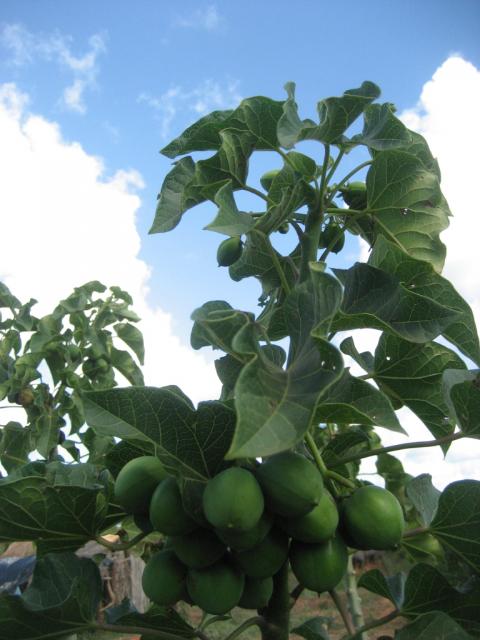The recent revelations of a International Energy Administration whistleblower that the IEA might have misshaped key oil forecasts under intense U.S. pressure is, if true (and whistleblowers seldom come forward to advance their careers), a slow-burning thermonuclear explosion on future global oil production. The Bush administration's actions in pressuring the IEA to underplay the rate of decrease from existing oil fields while overplaying the opportunities of finding brand-new reserves have the possible to toss federal governments' long-lasting planning into chaos.
Whatever the truth, increasing long term international needs appear particular to outstrip production in the next years, specifically offered the high and rising expenses of developing brand-new super-fields such as Kazakhstan's offshore Kashagan and Brazil's southern Atlantic Jupiter and Carioca fields, which will need billions in investments before their first barrels of oil are produced.
In such a scenario, additives and substitutes such as biofuels will play an ever-increasing role by stretching beleaguered production quotas. As market forces and rising costs drive this innovation to the leading edge, one of the wealthiest potential production locations has actually been absolutely overlooked by investors already - Central Asia. Formerly the USSR's cotton "plantation," the region is poised to end up being a significant player in the production of biofuels if sufficient foreign investment can be procured. Unlike Brazil, where biofuel is manufactured mainly from sugarcane, or the United States, where it is mostly distilled from corn, Central Asia's ace resource is an indigenous plant, Camelina sativa.
Of the previous Soviet Caucasian and Central Asian republics, those clustered around the shores of the Caspian, Azerbaijan and Kazakhstan have seen their economies boom due to the fact that of record-high energy rates, while Turkmenistan is waiting in the wings as a rising producer of gas.
Farther to the east, in Uzbekistan, Kyrgyzstan and Tajikistan, geographical seclusion and reasonably scant hydrocarbon resources relative to their Western Caspian next-door neighbors have actually largely prevented their capability to capitalize increasing global energy needs already. Mountainous Kyrgyzstan and Tajikistan remain mainly reliant for their electrical requirements on their Soviet-era hydroelectric facilities, but their increased need to create winter season electrical energy has caused autumnal and winter water discharges, in turn badly affecting the farming of their western downstream neighbors Uzbekistan, Kazakhstan and Turkmenistan.
What these 3 downstream nations do have nevertheless is a Soviet-era legacy of agricultural production, which in Uzbekistan's and Turkmenistan case was mostly directed towards cotton production, while Kazakhstan, beginning in the 1950s with Khrushchev's "Virgin Lands" programs, has ended up being a significant manufacturer of wheat. Based upon my discussions with Central Asian federal government authorities, offered the thirsty needs of cotton monoculture, foreign propositions to diversify agrarian production towards biofuel would have great appeal in Astana, Ashgabat and Tashkent and to a lower degree Astana for those hardy investors ready to bank on the future, particularly as a plant indigenous to the area has actually already proven itself in trials.
Known in the West as incorrect flax, wild flax, linseed dodder, German sesame and Siberian oilseed, camelina is bring in increased clinical interest for its oleaginous qualities, with several European and American business already examining how to produce it in commercial amounts for biofuel. In January Japan Airlines undertook a historic test flight using camelina-based bio-jet fuel, becoming the very first Asian provider to explore flying on fuel derived from sustainable feedstocks throughout a one-hour demonstration flight from Tokyo's Haneda Airport. The test was the conclusion of a 12-month examination of camelina's functional performance capability and potential business practicality.
As an alternative energy source, camelina has much to recommend it. It has a high oil content low in hydrogenated fat. In contrast to Central Asia's thirsty "king cotton," camelina is drought-resistant and unsusceptible to spring freezing, requires less fertilizer and herbicides, and can be used as a rotation crop with wheat, which would make it of specific interest in Kazakhstan, now Central Asia's significant wheat exporter. Another perk of camelina is its tolerance of poorer, less fertile conditions. An acre sown with camelina can produce approximately 100 gallons of oil and when planted in rotation with wheat, camelina can increase wheat production by 15 percent. A load (1000 kg) of camelina will contain 350 kg of oil, of which pushing can extract 250 kg. Nothing in camelina production is squandered as after processing, the plant's debris can be used for livestock silage. Camelina silage has an especially appealing concentration of omega-3 fatty acids that make it a particularly great animals feed prospect that is just now gaining recognition in the U.S. and Canada. Camelina is fast growing, produces its own natural herbicide (allelopathy) and competes well against weeds when an even crop is developed. According to Britain's Bangor University's Centre for Alternative Land Use, "Camelina might be an ideal low-input crop appropriate for bio-diesel production, due to its lower requirements for nitrogen fertilizer than oilseed rape."
Camelina, a branch of the mustard family, is indigenous to both Europe and Central Asia and barely a brand-new crop on the scene: archaeological evidence indicates it has actually been cultivated in Europe for a minimum of 3 centuries to produce both grease and animal fodder.
Field trials of production in Montana, presently the center of U.S. camelina research, showed a large range of results of 330-1,700 lbs of seed per acre, with oil content differing in between 29 and 40%. Optimal seeding rates have actually been identified to be in the 6-8 lb per acre variety, as the seeds' little size of 400,000 seeds per lb can develop issues in germination to attain an ideal plant density of around 9 plants per sq. ft.
Camelina's potential might allow Uzbekistan to begin breaking out of its most dolorous tradition, the imposition of a cotton monoculture that has distorted the country's attempts at agrarian reform given that accomplishing self-reliance in 1991. Beginning in the late 19th century, the Russian federal government figured out that Central Asia would become its cotton plantation to feed Moscow's growing fabric industry. The procedure was accelerated under the Soviets. While Azerbaijan, Kazakhstan, Tajikistan and Turkmenistan were likewise bought by Moscow to plant cotton, Uzbekistan in particular was singled out to produce "white gold."
By the end of the 1930s the Soviet Union had actually become self-sufficient in cotton; five decades later on it had actually ended up being a major exporter of cotton, producing more than one-fifth of the world's production, focused in Uzbekistan, which produced 70 percent of the Soviet Union's output.
Try as it may to diversify, in the lack of alternatives Tashkent remains wedded to cotton, producing about 3.6 million tons each year, which brings in more than $1 billion while constituting around 60 percent of the nation's hard cash earnings.
Beginning in the mid-1960s the Soviet federal government's regulations for Central Asian cotton production mostly bankrupted the region's scarcest resource, water. Cotton uses about 3.5 acre feet of water per acre of plants, leading Soviet coordinators to divert ever-increasing volumes of water from the region's two main rivers, the Amu Darya and Syr Darya, into ineffective irrigation canals, resulting in the significant shrinkage of the rivers' final location, the Aral Sea. The Aral, as soon as the world's fourth-largest inland sea with a location of 26,000 square miles, has actually shrunk to one-quarter its original size in one of the 20th century's worst ecological catastrophes.
And now, the dollars and cents. Dr. Bill Schillinger at Washington State University just recently described camelina's service design to Capital Press as: "At 1,400 pounds per acre at 16 cents a pound, camelina would generate $224 per acre; 28-bushel white wheat at $8.23 per bushel would amass $230."
Central Asia has the land, the farms, the watering facilities and a modest wage scale in comparison to America or Europe - all that's missing is the foreign financial investment. U.S. financiers have the cash and access to the know-how of America's land grant universities. What is certain is that biofuel's market share will grow with time; less particular is who will gain the benefits of establishing it as a practical concern in Central Asia.
If the current past is anything to pass it is not likely to be American and European financiers, fixated as they are on Caspian oil and gas.

But while the Japanese flight experiments show Asian interest, American investors have the scholastic competence, if they are prepared to follow the Silk Road into establishing a brand-new market. Certainly anything that minimizes water use and pesticides, diversifies crop production and enhances the great deal of their agrarian population will receive most cautious consideration from Central Asia's federal governments, and farming and vegetable oil processing plants are not just much less expensive than pipelines, they can be built quicker.
And jatropha curcas's biofuel potential? Another story for another time.








